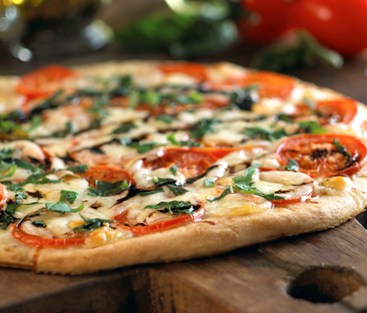50-Minute Classroom: the Importance of Preparation among the 5 “P”s
15 February 2010By Adam Weiner
 Says Chef Weiner, even in short classes, instructors must stop doing the mise en place themselves unless they plan on accompanying students to their first jobs.
Says Chef Weiner, even in short classes, instructors must stop doing the mise en place themselves unless they plan on accompanying students to their first jobs.
There are five “P”s of professional cooking: Planning, Preparation, Presentation, Passion and Pride. Presentation and planning have appeared in past “50-Minute Classrooms.” Now, preparation.
I tell students that preparation (aka MISE EN PLACE) is everything. I start with an example of changing the oil in a car. You don't get under the car, climb out and get a wrench, climb back under and then climb out and go to the store to buy a filter, etc. You first get everything next to the car.
I explain mise en place is for both equipment and food. I ask the students what they would do if they worked in a pizza place and an order came in: "First I would pull out the dough, ladle on the sauce, put on the toppings and cheese, and put the pizza in the hot oven." I point out that everything was prepared ahead of time. I ask why not just combine the flour with the water and yeast to make the dough, run to the walk-in to get the tomatoes, get a knife to cut up the tomatoes and a pan to cook them for the sauce, start grating the cheese, pre-heat the oven and then run and wash and cut the mushrooms? The students always say, "If you did that you would never be able to make more than one pizza." I love it when they grasp the concept.
To facilitate cooking in 50 minutes, instructors often do all of the mise en place themselves. We portion out the flour and salt when baking; divide the lettuce when teaching salads. We have to stop doing this. We won't be with students at their first jobs, so we better stop spoiling them. In the early stages of teaching mise en place, I set up my mise en place (equipment and food) as if I were doing the recipe. I then tell each team that they cannot start cooking until I sign off on their mise en place. When they bring theirs up, I have them compare it to mine, item by item.
Next, I give the students a recipe with time-consuming steps, such as separate four dozen eggs and then whip the whites in small batches to stiff peaks. The last ingredient of the recipe is something that I know we don't have, like 4 pounds of foie gras. In theory, each group should be back in five minutes saying they can’t find the foie gras. In practice, the group will separate and beat the eggs first. When that happens, I explain to the groups that they just failed the assignment. They didn’t do their preparation before starting. I tell them if this were a job, they would be terminated on the spot. They wasted costly ingredients and even more costly labor.
I would like to say that this technique works the first time, but it doesn’t. It will take several times before the students learn to always do their preparation before starting to cook.
Chef Adam Weiner teaches a 20-week Introduction to Cooking program for JobTrain and the Sequoia Adult School on the San Francisco Peninsula.
Photo caption: Chef Weiner explains mise en place to students by asking what they would do if they worked in a pizza place and an order came in. The answer? Have ingredients and equipment at the ready. This Margherita pizza served at Lou Malnati’s Pizzeria in Chicago boasts Fresh Mozzarella Pearls from BelGioioso Cheese, Inc., sliced heirloom tomato, fresh basil and olive oil atop a thin flour crust.
